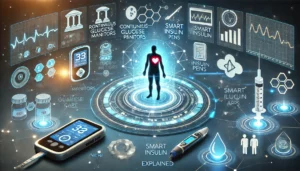alt=”Description of image content” style=”width:650px; height:auto;”/>
# Revolutionizing Blood Pressure Management with Remote Monitoring and Pharmacist Support
High blood pressure, often dubbed the “silent killer,” affects millions worldwide, significantly increasing the risk for heart disease and stroke. Traditionally, managing blood pressure involves regular doctor visits, dietary adjustments, and medication adherence. However, a revolutionary approach, incorporating remote monitoring and pharmacist support, is changing the landscape of blood pressure management. This approach promises to drastically improve outcomes for individuals with hard-to-control hypertension.
## Understanding the Challenges of Controlling Blood Pressure
Managing blood pressure is not a one-size-fits-all process. Several factors contribute to the difficulty:
–
–
–
These challenges have spurred the development of innovative solutions to enhance the management of hypertension.
## The Emergence of Remote Monitoring
Remote monitoring is swiftly becoming a cornerstone in managing chronic health conditions, including hypertension. Here’s why:
### How It Works
Patients use advanced technology to monitor their blood pressure from the comfort of their homes. Devices transmit data to healthcare providers in real-time, enabling continuous assessment without frequent physical appointments.
### Benefits of Remote Monitoring
–
–
–
–
This approach not only simplifies the process for patients but also provides healthcare providers with more accurate and comprehensive data, facilitating better-informed decisions.
## The Vital Role of Pharmacist Support
Incorporating pharmacists into the management team provides a multifaceted approach that enhances care and improves patient outcomes.
### Detailed Medication Management
Pharmacists are uniquely positioned to manage and optimize drug therapies:
–
–
–
### Personalized Patient Education
A pharmacist’s involvement extends beyond medications. They offer valuable insights and education on lifestyle changes critical to blood pressure management, such as dietary adjustments, exercise recommendations, and stress reduction techniques.
### Continuous Patient Support
Pharmacists maintain regular contact with patients, offering continuous support and addressing concerns promptly. This ongoing interaction fosters patient trust and adherence to prescribed regimens.
## Significant Results and Impacts
The integration of remote monitoring and pharmacist support has shown promising results in managing hard-to-control blood pressure, as highlighted in recent studies and pilot programs. Key findings include:
–
–
–
Patients utilizing these combined services often report feeling more in control of their health, leading to improved overall well-being and reduced healthcare costs due to fewer emergency interventions.
## Future Prospects for Hypertension Management
The future of hypertension management is bright, with several promising trends on the horizon:
### Advances in Technological Tools
Emerging technologies are constantly refining remote monitoring devices, improving their ease of use, accuracy, and affordability. Innovations like AI-driven data analysis and smartphone applications can offer tailored recommendations and streamline communication between patients and healthcare providers.
### Expanding Pharmacist Roles
As the healthcare landscape evolves, pharmacists’ roles in patient care management will likely expand. Recognizing pharmacists as primary care providers, particularly in managing chronic conditions like hypertension, could enhance healthcare accessibility and patient outcomes.
### Integrated Healthcare Models
The integration of remote monitoring, pharmacist support, and traditional medical practices heralds a new era in comprehensive healthcare models. Such models could potentially improve outcomes across numerous chronic conditions, setting a precedent for more holistic patient care.
## Conclusion
The combination of remote monitoring and pharmacist support is truly revolutionizing blood pressure management for patients with hard-to-control hypertension. This innovative approach not only enhances the accuracy of monitoring and increases medication adherence but also empowers patients to take a more active role in managing their health.
As technology continues to advance and healthcare models evolve, the future of hypertension management appears increasingly promising. Embracing these changes now could lead to a healthier population, with fewer complications from unmanaged high blood pressure. The integration of these methodologies holds the potential to fundamentally alter how chronic conditions are managed, offering renewed hope and improved quality of life for patients worldwide.



